Photo Credit: WCS Central Africa Republic
Operation tortoise transport: A case study in the Central African Republic
2022 CMP Photo Story Competition Winner
by the Wildlife Conservation Society – Central Africa Republic
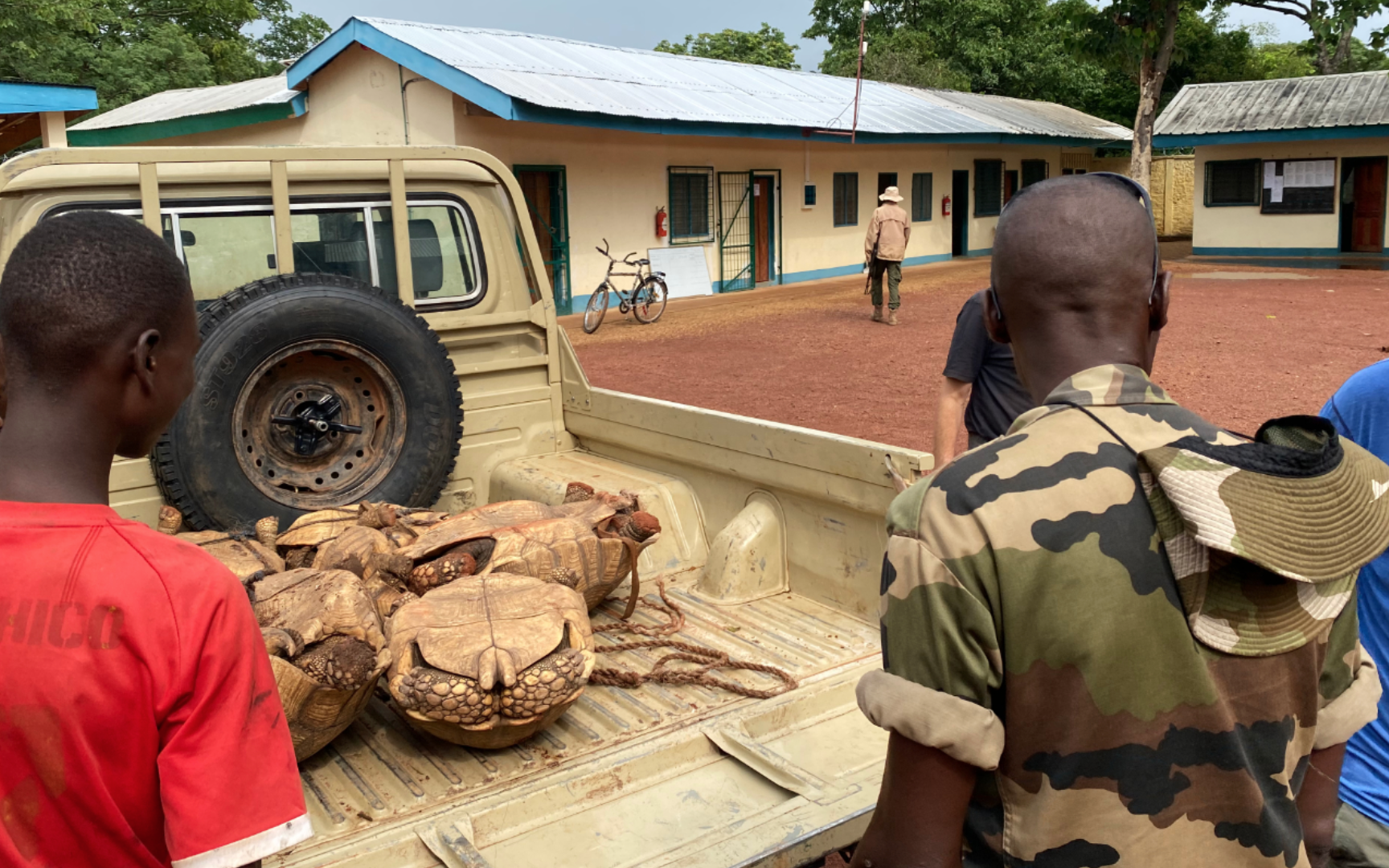
“They got on time! The rangers of the Bamingui-Bangoran National Park quickly reached a group of wildlife traders just before the Bamingui village entrance. They were heading to Bangui, the capital city, to deliver six giant turtles to a public servant, even though the species is protected by Central African Republic national law.”
This is how the effectiveness of Conservation Standards looks in practice: Our PLAN gives us clear conservation goals: halt wildlife trafficking and stop poaching. This plan also guides operational procedures so that the park rangers know what to do in this type of event.
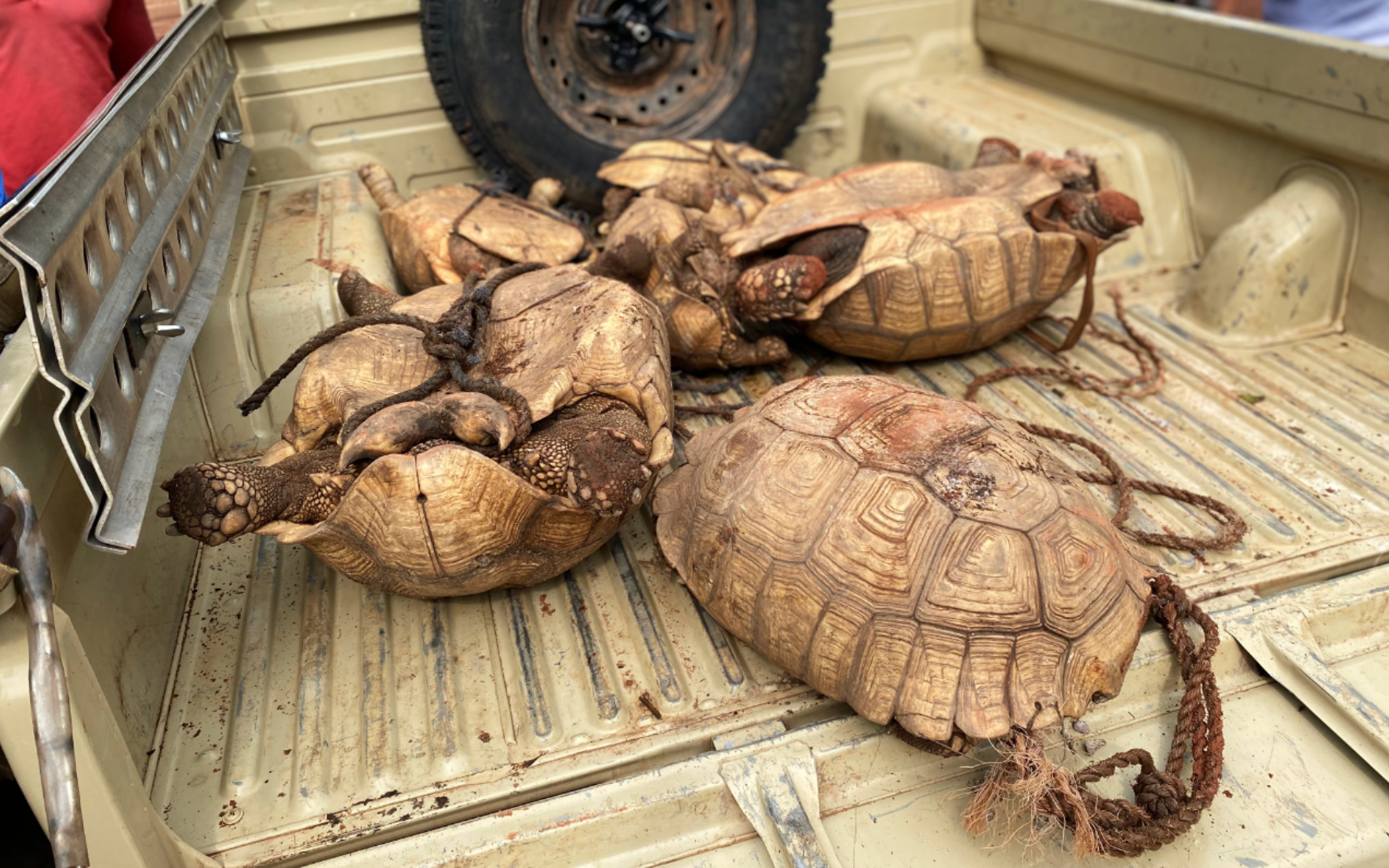
“The Forest Inspector alerted the WCS team, who conducted the process with due diligence: convene local authorities, contact national public servants, register the evidence, and ensure the verbal process. Meanwhile, the six turtles were taken to the Bamingui base.”
As part our ASSESSMENT, we identified crucial stakeholders to involve in our mission and vision. Local authorities and our team collaborate regularly to tackle conservation threats like wildlife trafficking. Community engagement is also part of our PLAN’s strategies.
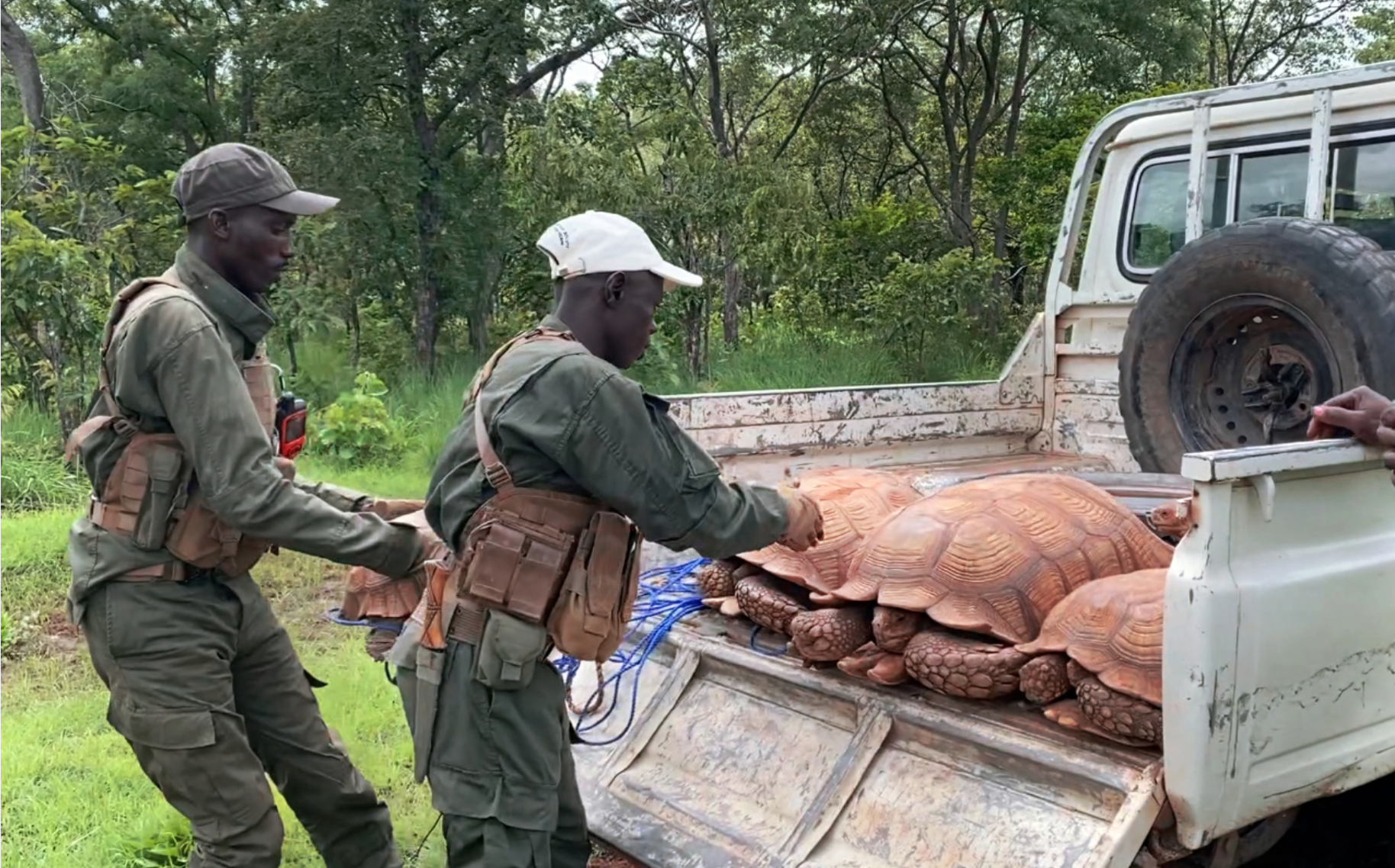
“After conducting the procedure, the time has come! Two Park Rangers, the Forest inspector, a community scout, and a communications specialist went into the bush. The six turtles awaited fresh herbs and water for so long!”
Another crucial standard in our conservation program is allocating resources for quick deployment and responses within and around the Bamingui Park. The budget is linked to monthly work plans. In this way, we increase the effectiveness of regular patrolling for biomonitoring and anti-poaching operations.
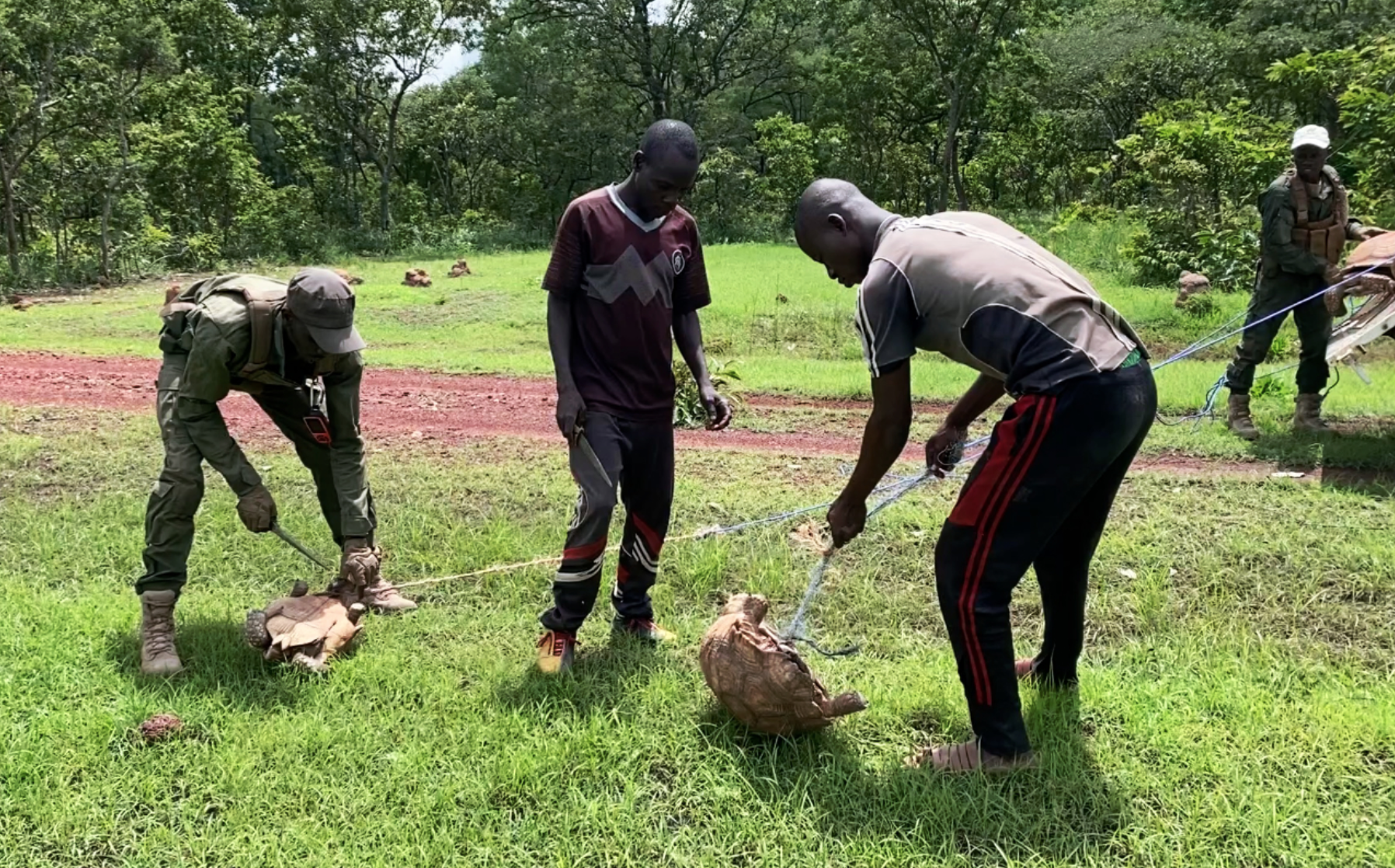
“One by one, the giant turtles, without having lost their shells, were placed on the forest grass at first. The biomonitoring team has hardly spotted giant turtles across the zone. Where poaching has reduced more than 90% of the wildlife population in northeastern CAR, saving every wild animal is a victory”
Having assessed the conservation situation help us measure our progress. Park rangers, community scouts, and transhumance management agents collect data to informs our monitoring plan and adapt our operations in the bush.
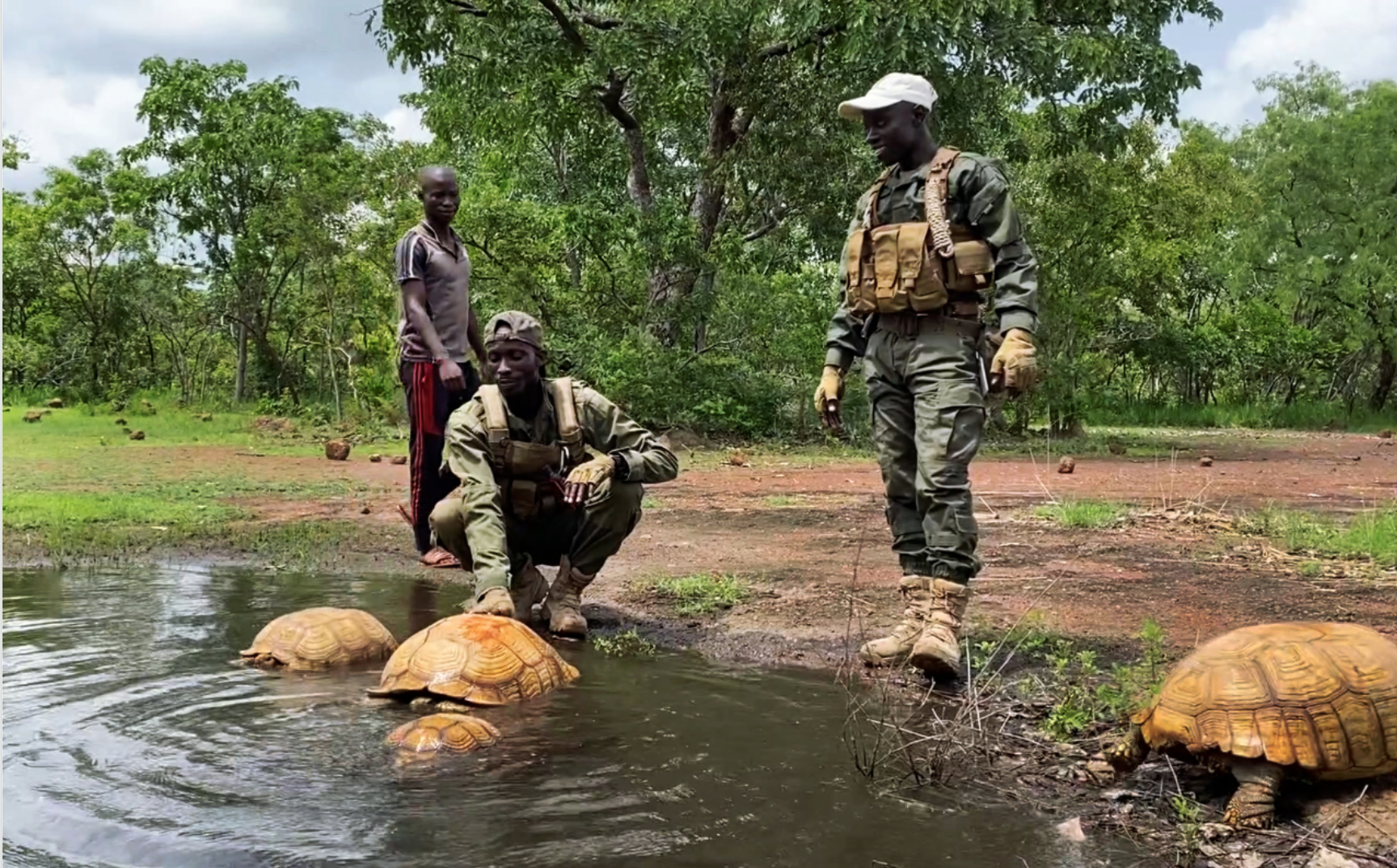
“We need to find some water for them! The community scout suggested. As in every conservation project, local knowledge is vital! The rangers, knowledgeable about water points, helped to find them. It was not so easy as the dry season lasted longer because of climate change.”
Sharing knowledge among team members and local communities enhances conservation actions. Community scouts and park rangers are two of the three types of teams operating in the landscape. Each has established goals and work plans, which in combination lead to better outcomes.
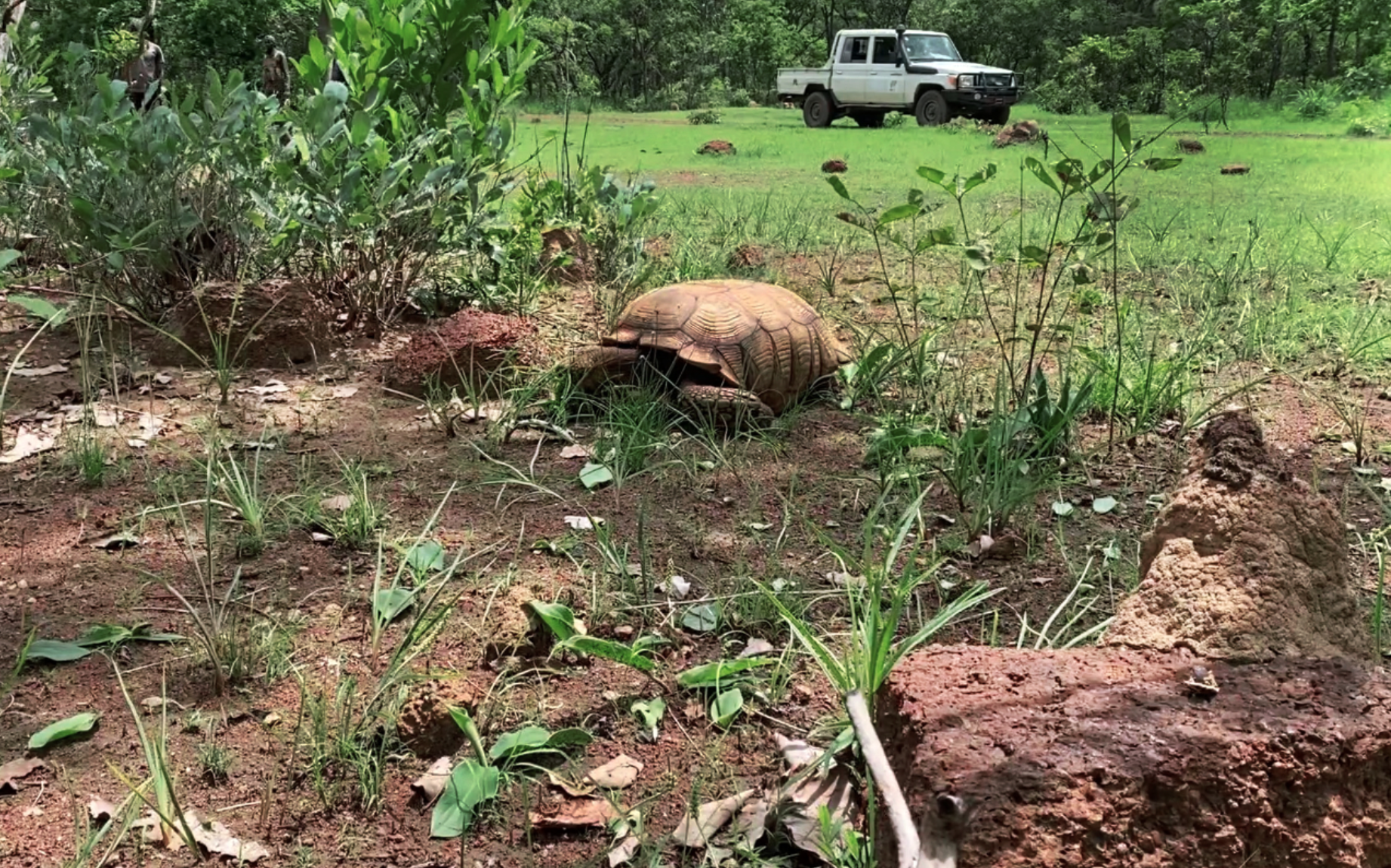
“The mission’s team watched them go away slowly, really slowly. No threats were around this time, just fresh food from abundant forests, able to sustain wildlife and people’s well-being”.
The release of turtles was recorded. Geographic points, dates, people involved, and wildlife species are part of a wide range of data, used to analyze our interventions and improve our conservation practices.
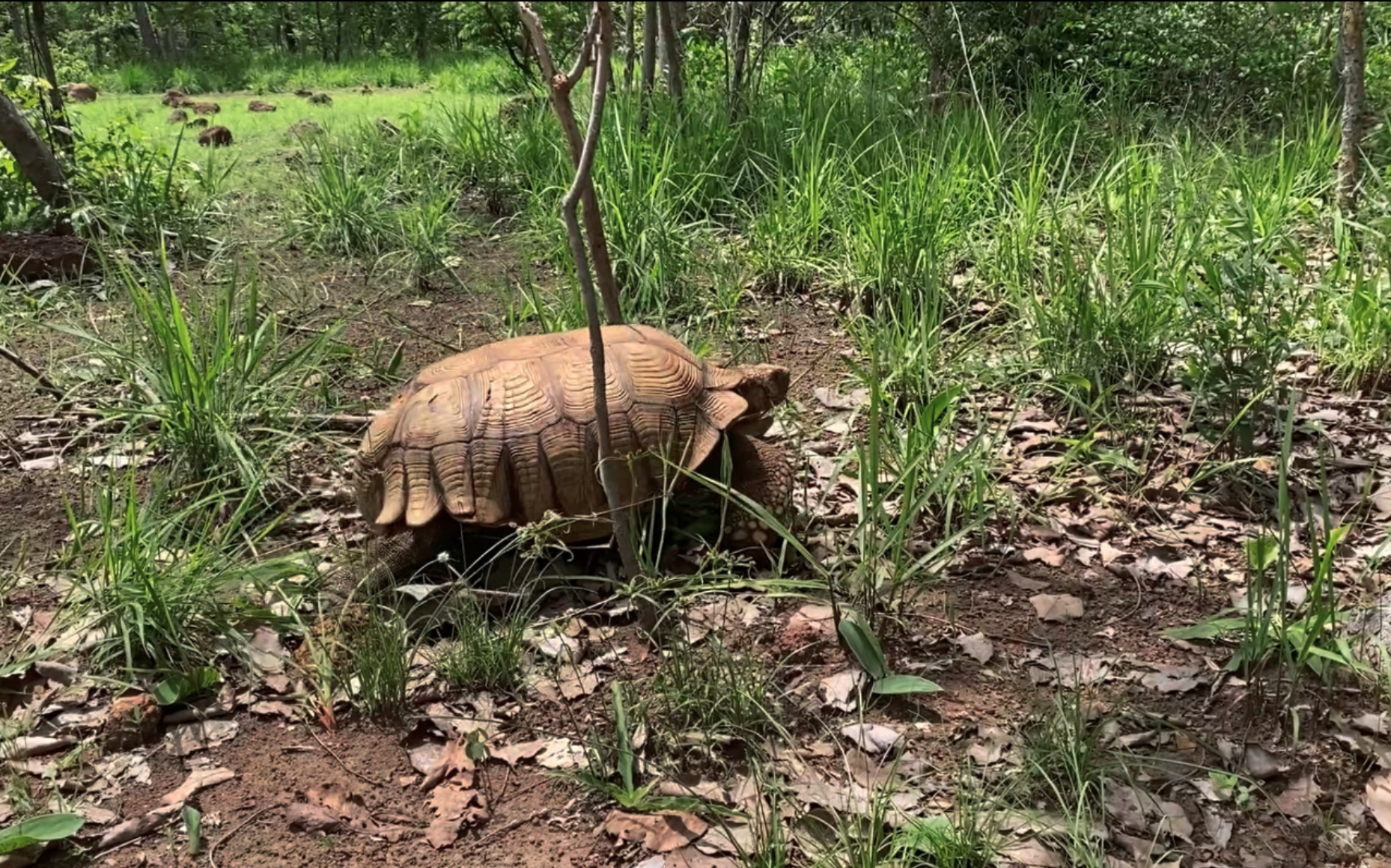
“We left the place hoping the turtles increase their size and distribution. It was a good team work, including local authorities and community members.
All of us feeling encouraged to continue saving wildlife and wild places. All of us aware of our conservation goal”.
Learn more about the 2022 photo story competition here.
Download CS
The Conservation Standards is the product of inputs, field tests, and discussions among members of the Conservation Measures Partnership (CMP), which has final editorial authority over the Conservation Standards. Substantial input was also provided by members of the Conservation Coaches Network (CCNet) and other CMP partners.
Photo Credit: Felix Cybulla
Support CS
The biodiversity conservation community is tackling large, complex, and urgent environmental problems where the stakes are high. However, we don’t have a fully functional system to assess the effectiveness of our actions. Without more rigorous measurement of effectiveness and disciplined recording of our efforts, we cannot know or demonstrate that we are achieving desired results.
Photo Credit: Felix Cybulla
Our Collaborators
Every organization, agency, project, and individual has its own preferred set of terms. There is no right answer – the most important thing is that the members of your project team and the people with whom you work have a clear and common understanding of whatever terms you choose to use.
Photo Credit: Chris Scarffe
Contact Us
To inquire about supporting Conservation Standards (CS) or for general inquiries, please contact us at CMPinfo@ConservationMeasures.org
Photo Credit: Nature Conservancy of Canada
